 |
 |
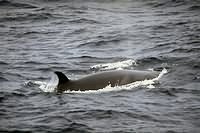 |
- Whales travel huge distances to feed
and give birth to their young. Many sing to each other while
travelling. Some whale songs can be heard 2500km away from the
singer.
|
- Most big whales spend the summer feeding
on plankton in the seas around the Arctic or Antarctic. Then,
as the autumn sets in, they swim to the warm waters of the tropics
to have their babies. They can cover 8000km in a month.
|
- Whales are unique among mammals in
that they carry out their complete life in the water.
|
- The term cetacean encompasses all 79 known
species of whales, dolphins, and porpoises. Those more than 4
to 5 m (13 to 16 ft) long are generally referred to as whales.
|
- Whales probably descended from a four-legged
land animal. Fossils indicate that early whales swam in a manner
similar to modern otters.
|
- Most smaller whales, and all dolphins
and porpoises, belong to the toothed whale suborder. Toothed
whales have teeth that are uniform in size and shape, and they
feed on fish and invertebrates such as squid and crustaceans.
|
- One species, the killer whale, also
eats seabirds and marine mammals.
|
- Probably the largest animal ever to
have lived is a baleen whale, the blue whale, which has been
measured up to 30.5 m (100 ft) in length.
|
- Whales breathe air through one or two
nostrils on the top of the head (the blowhole).
|
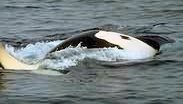 |
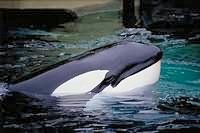 |
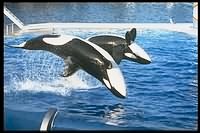 |
- Baleen whales can hold their breath
for up to 50 minutes when diving, and sperm whales for up to
60 minutes; sperm whales dive to depths of 1,000 m (3,300 ft)
in search of giant squid.
|
- Reproduction in whales is essentially
the same as in other mammals. After 9 to 16 months a single calf
is born underwater. A healthy calf can swim from the instant
it is born. Soon after, it begins to suckle.
|
- A whale reaches sexual maturity at
6 to 13 years of age. The lifespan ranges from about 30 years
for small toothed whales to as long as 80 years for baleen whales.
|
- Not all whales survive to old age,
disease, injury, and predation by killer whales, sharks, and
whalers take their toll.
|
- Hearing is the primary sense among
whales.
|
- Considerable speculation exists as
to the intelligence of cetaceans. They are the only animals (other
than the elephant) with a brain larger than a human's.
|
- Some species exist for the most part
as solitary animals, whereas others occur in family groups or
in pods or schools numbering hundreds of individuals.
|
- Half of all whale species can be considered
rare. Individuals of such species are not (and perhaps never
were) very numerous.
|
- Most of the commercially valuable whale
species, such as blue, sei, bowhead, humpback, and right whales,
are endangered as a result of over-hunting, to the point that
the animals killed outnumber the animals being born.
|
- The blue whale is the biggest animal
that has ever lived. It is even larger than the biggest dinosaurs
from the prehistoric times.
|
- The streamlining of whales in the course
of their evolution resulted in an animal that appears remarkably
fish-like. The front limbs became modified as flippers. The hind
limbs were lost; the broad horizontal tail flukes, that provide
the main propulsive thrust, are a separate development. The body
is enveloped in a layer of blubber that aids in buoyancy, preserves
body heat, and serves as a source of stored energy.
|
- The numbers of some species are perhaps
already so low that they can never recover.
|
- The biggest baby is the calf of the
blue whale. It is about 7m long when born, and weighs 2 tonnes
|
- On the day that a baby blue whale is
born it is as big as an elephant. Each
day it drinks 200 litres (352 pints) of its mothers milk and
puts on an extra 90kg (200 lb) in weight.
|
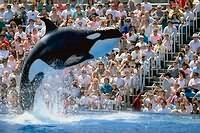 |













